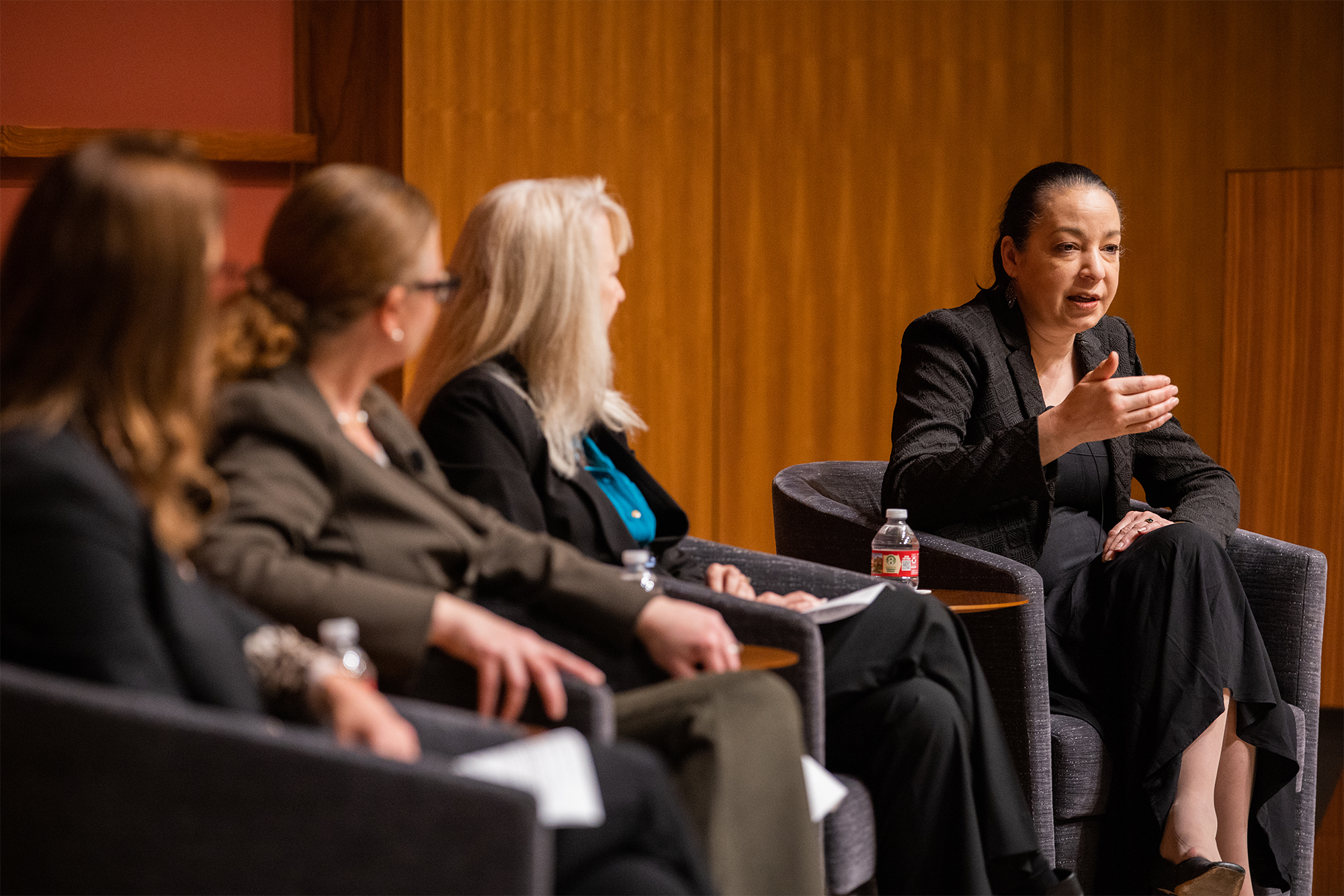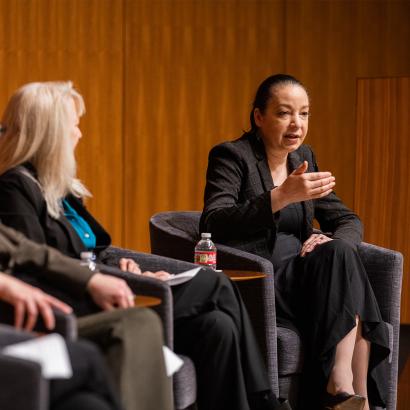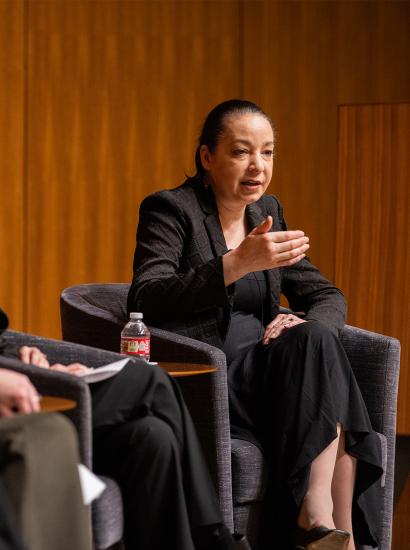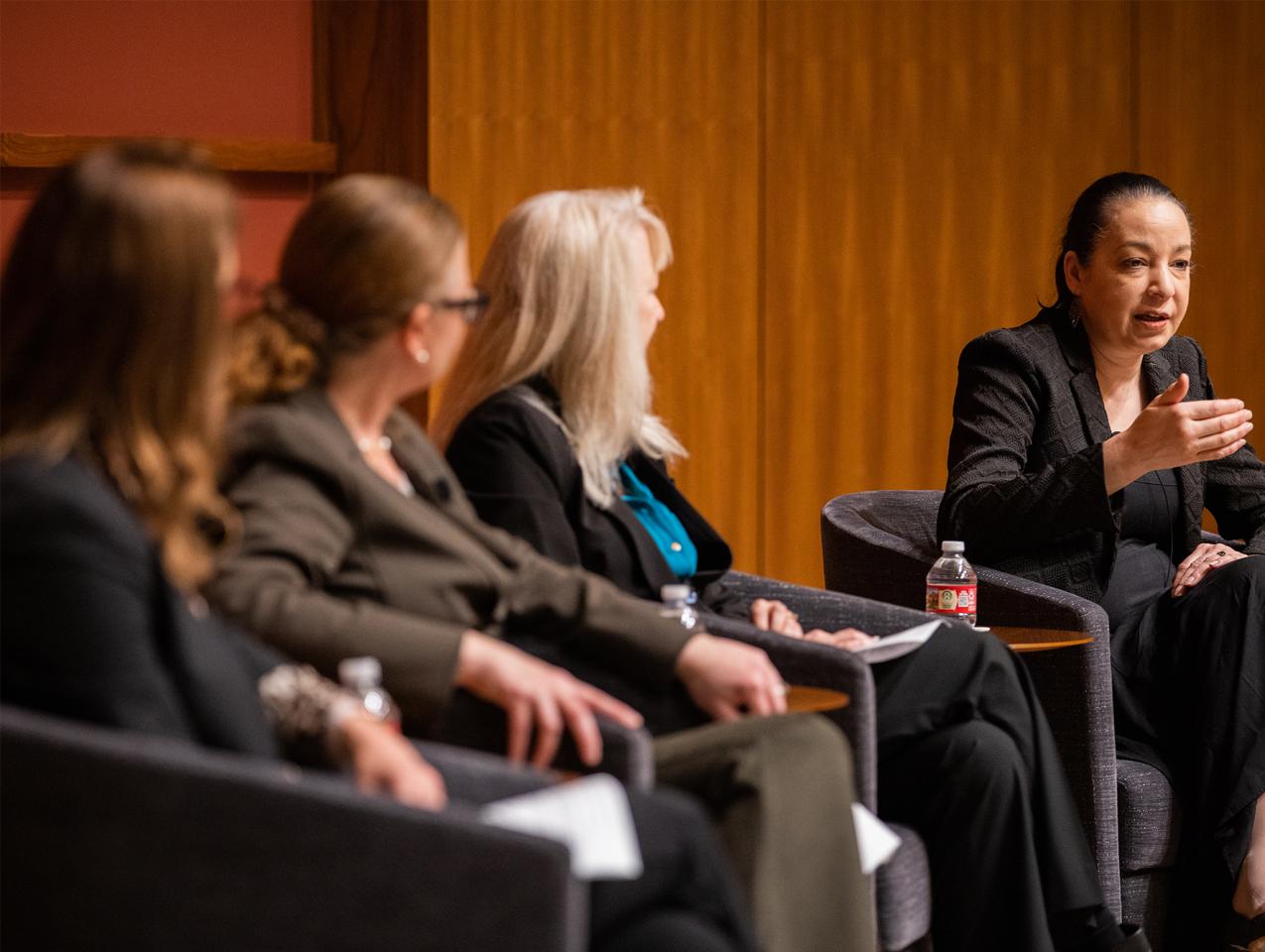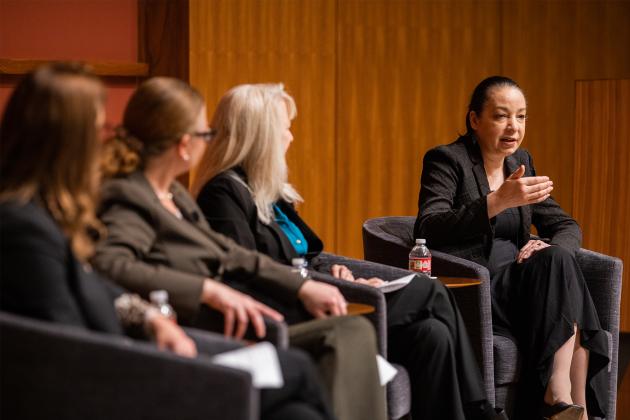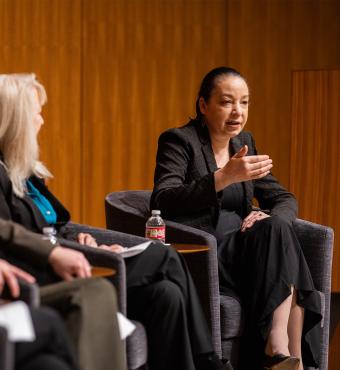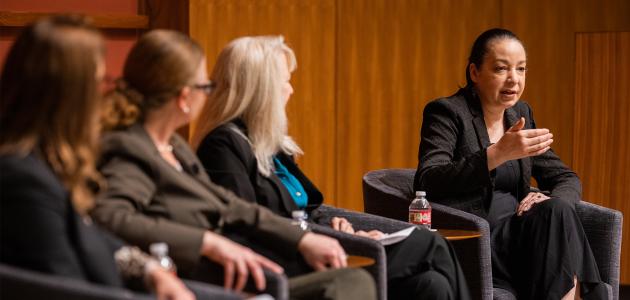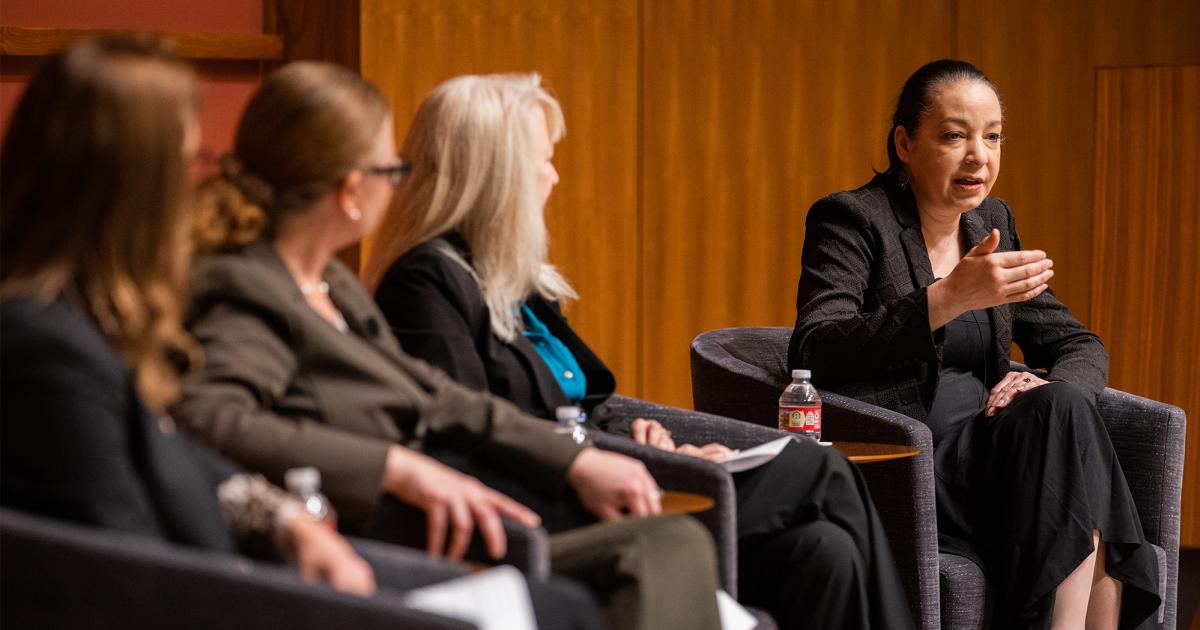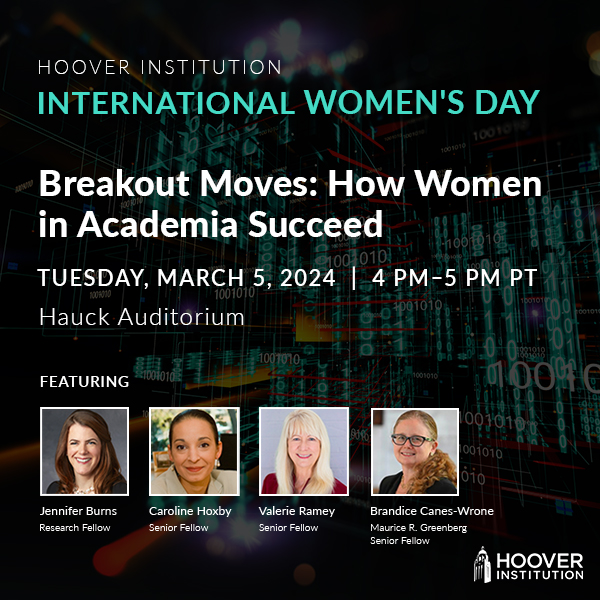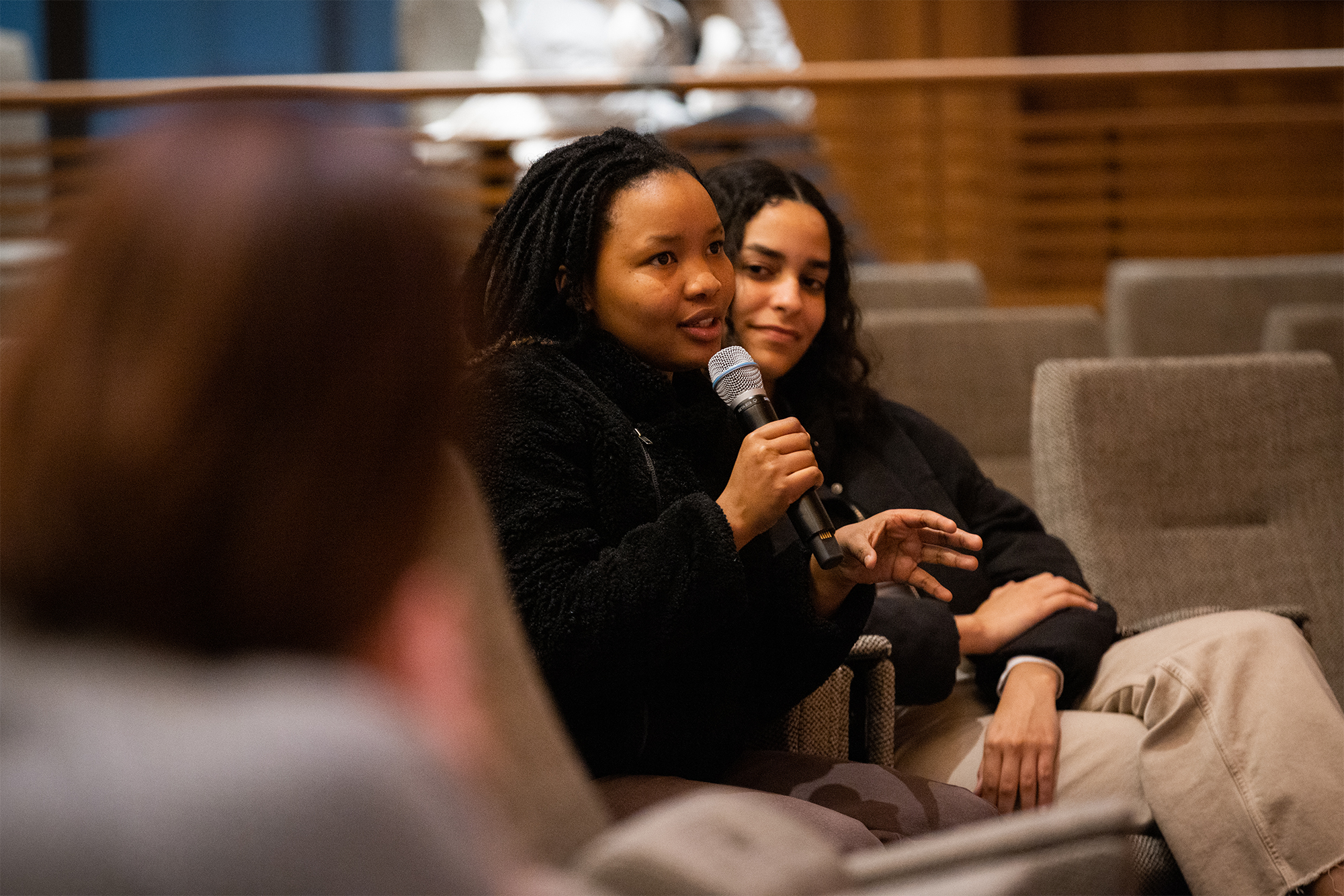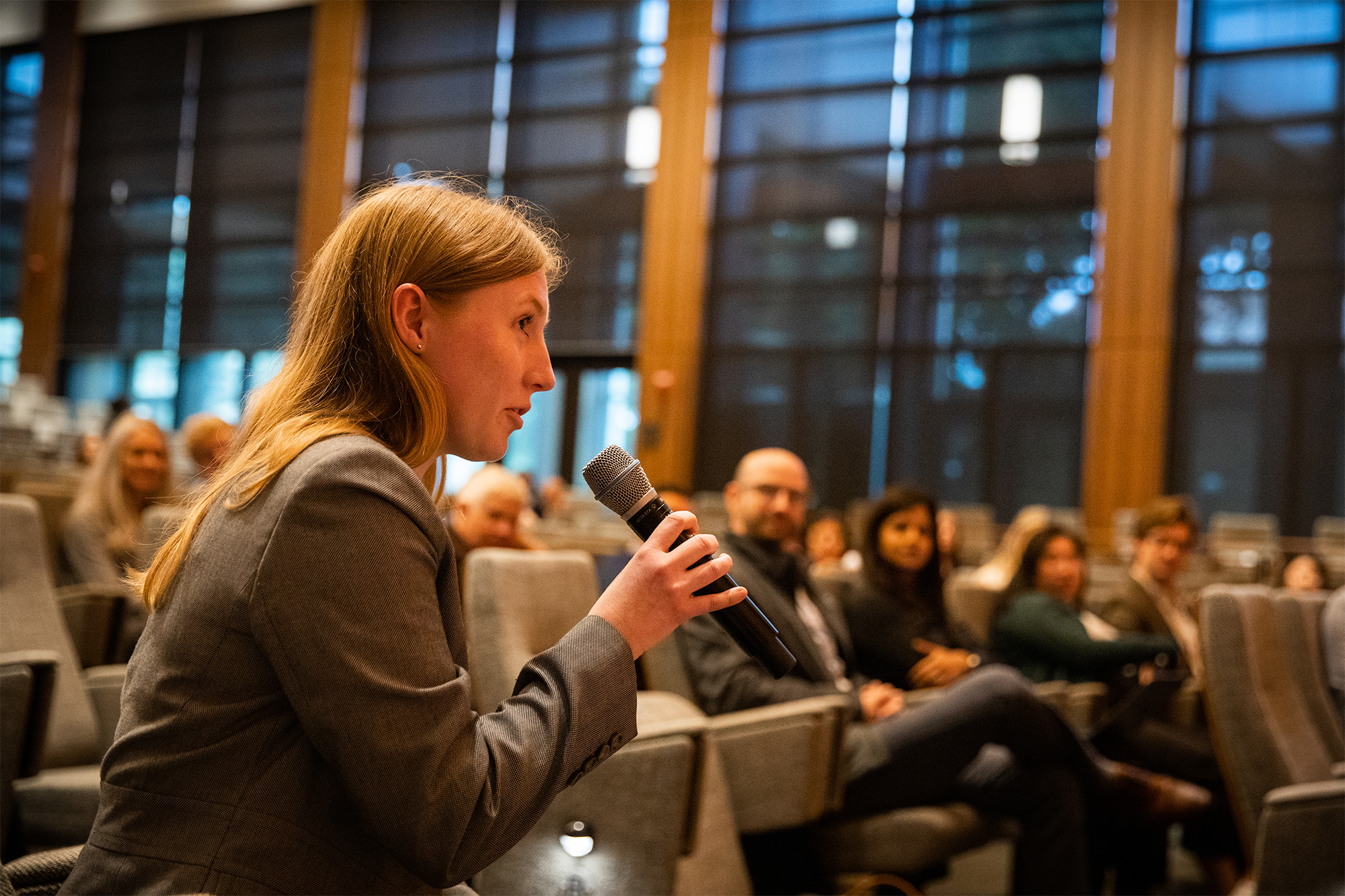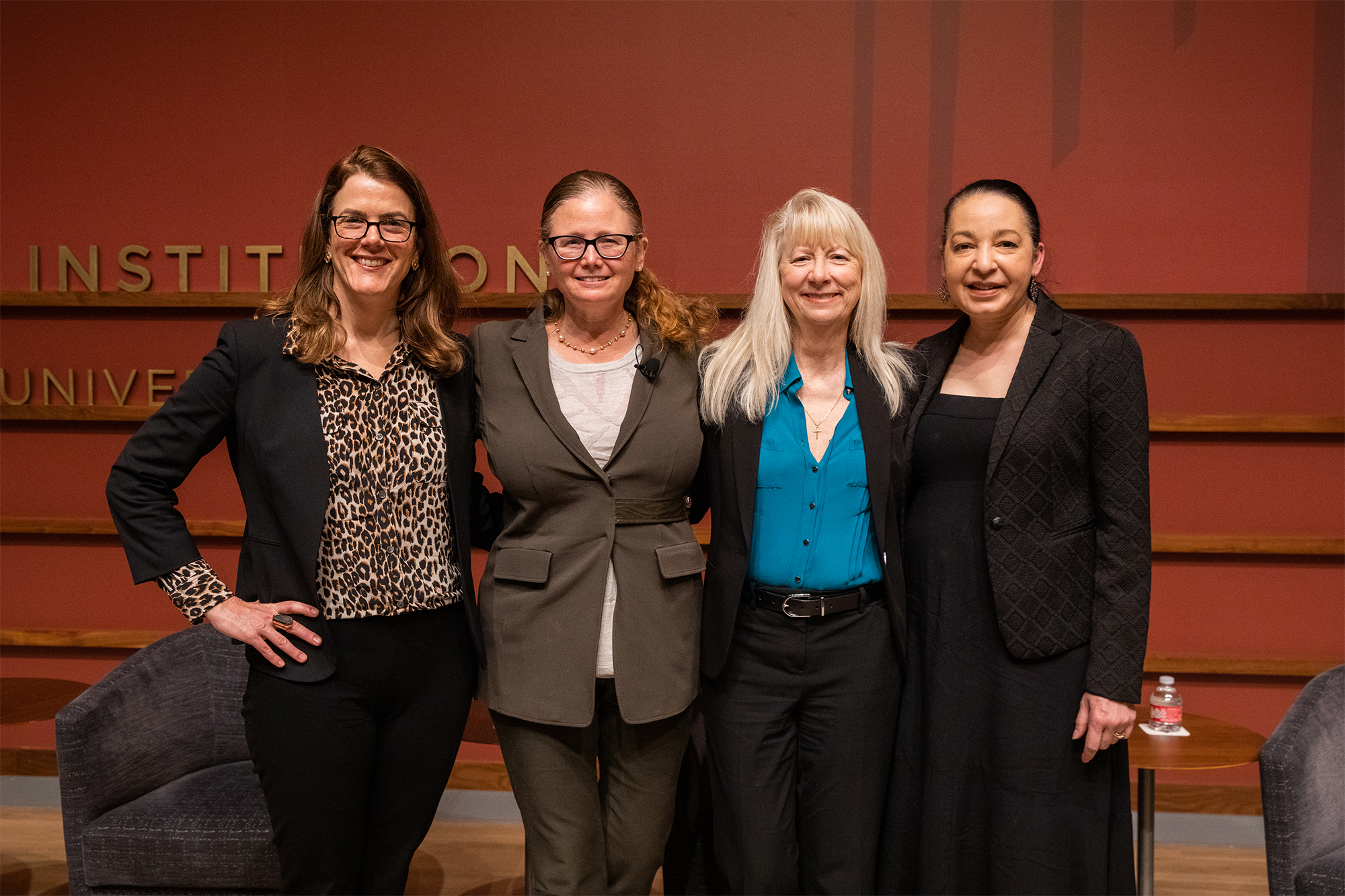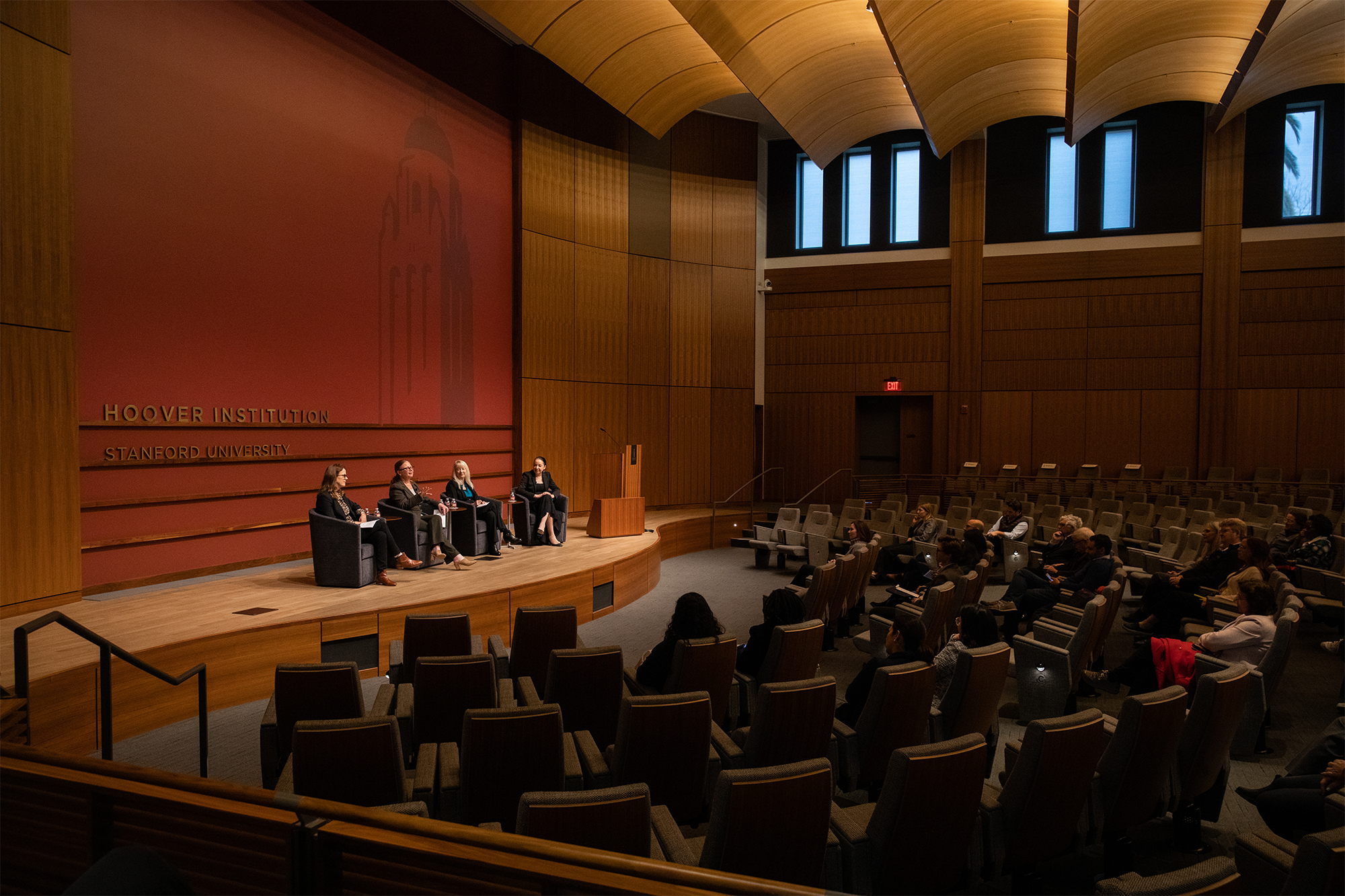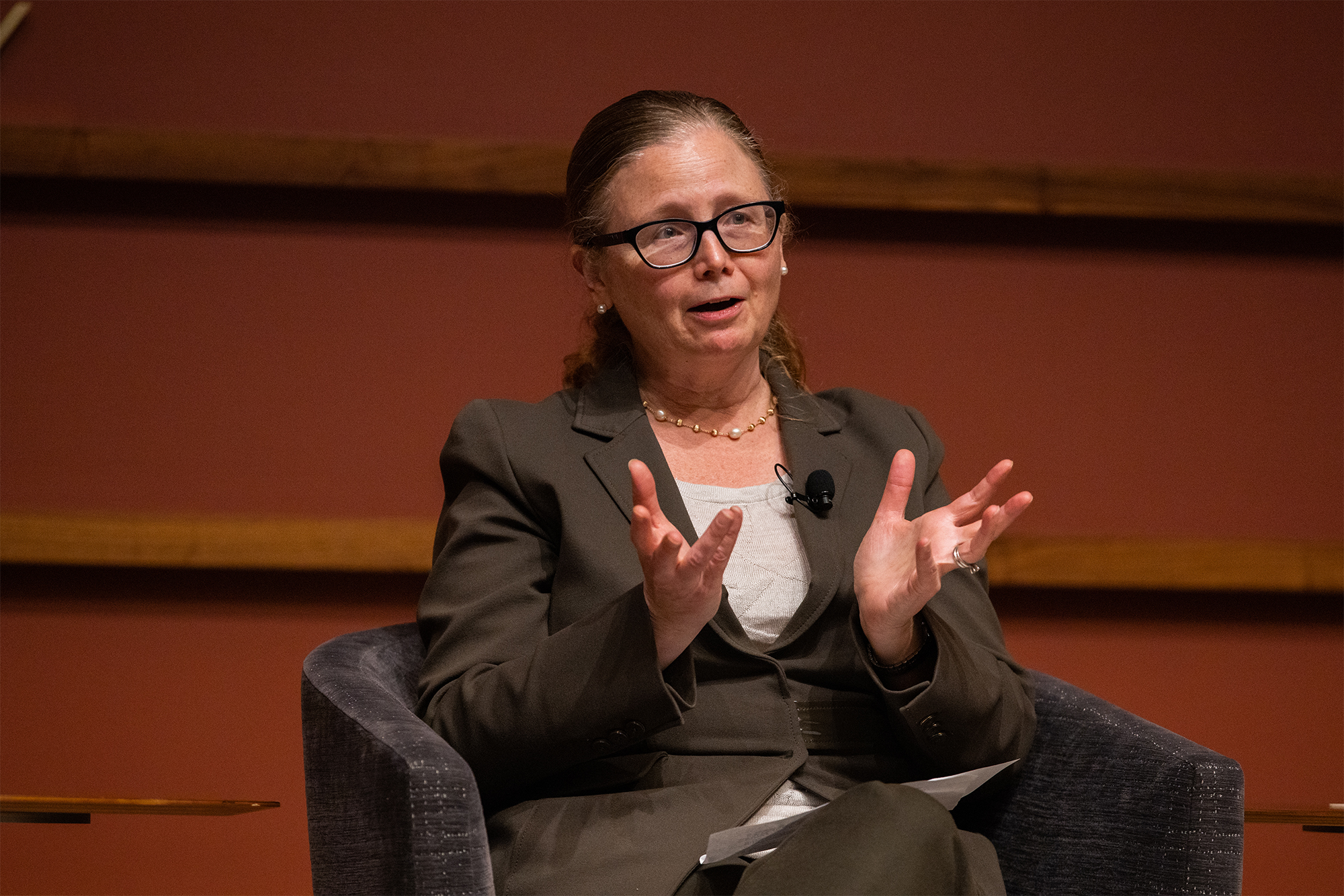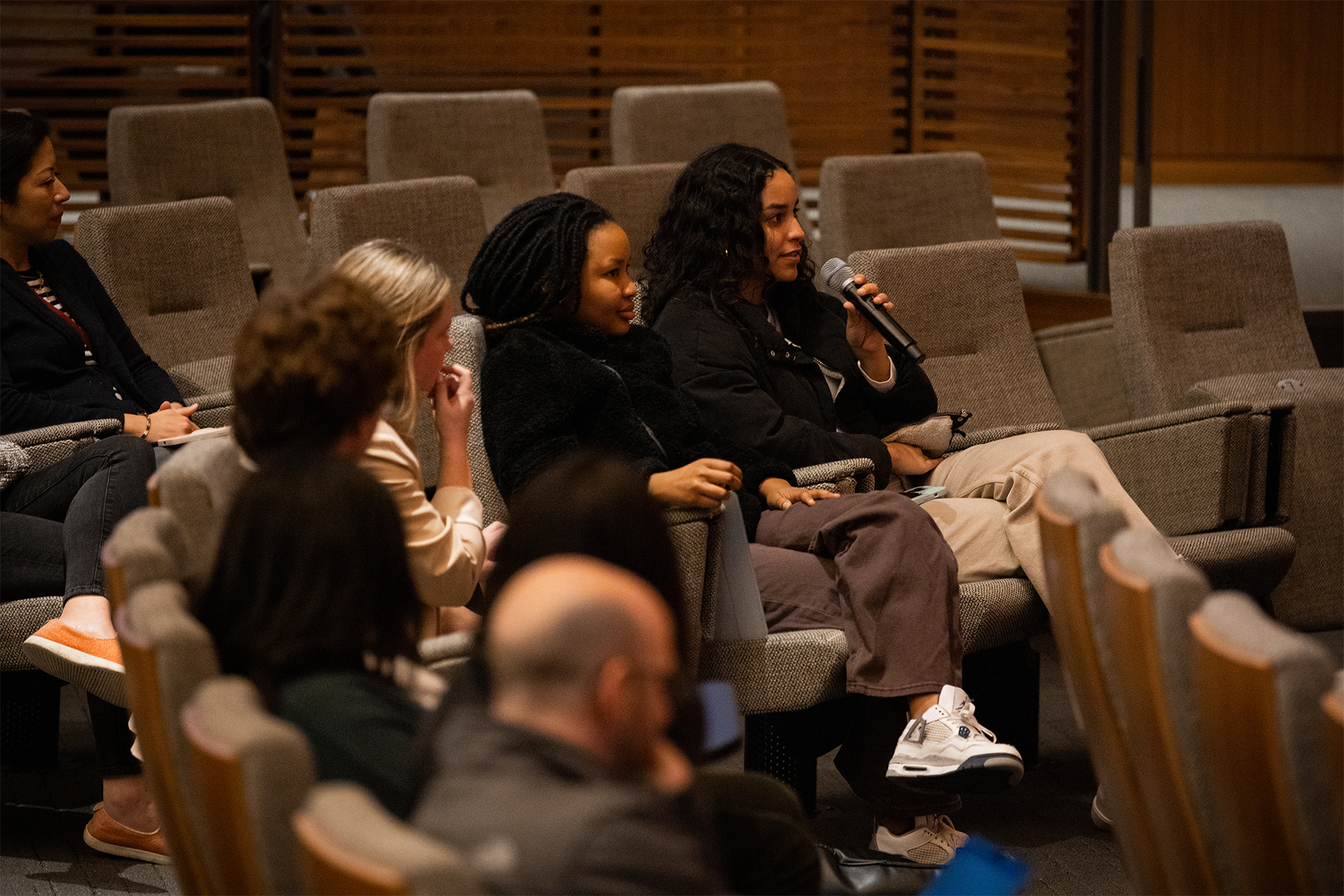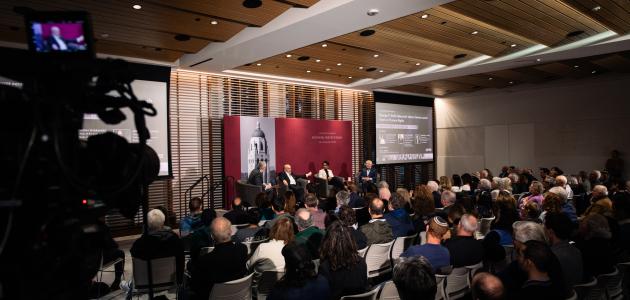Seeking a new job some years ago, Hoover Institution Maurice R. Greenberg Senior Fellow Brandice Canes-Wrone recalls going to an interview and requesting a lactation room.
“[I] told them I was pumping, and I was given a glass room to pump in—that’s not how you want to get the job,” Canes-Wrone, who also serves as director of Hoover’s Center for Revitalizing American Institutions, told an audience on March 5, 2024.
But Canes-Wrone says she took it in stride.
“The person who is doing this is not doing it nefariously. They had just never had someone come in who needed to do this,” she said about her prospective employer.
In terms of gender equality, gone are the obvious challenges, like unfair rules for maternity leave or an “old boys’ club” mentality, say some female academics, but they are still encountering disparities in pay, the loneliness of single authorship, and encountering anonymous gossip on social media.
For this International Women’s Day, the Hoover Institution brought together female Hoover senior fellows Canes-Wrone, who also serves as a professor of political science in Stanford’s School of Humanities and Sciences, Caroline Hoxby, who is the Scott and Donya Bommer Professor in the School of Humanities and Sciences, and Valerie Ramey to speak about how they each navigated the academic landscape as women and rose to become leaders in their respective fields. The event was moderated by Jennifer Burns, Hoover research fellow and Stanford associate professor of history.
But even though all four panelists said the workplace has progressed tremendously in the last few decades, there are still challenges that persist. Some are unique to academia and largely unknown outside that realm.
“I think things have changed so much since I was young—if we continue at this pace that it will be really quite good for women in upcoming generations,” Hoxby said. “But women still face an amount of weird sexism in my field—social media things that can be really unfortunate—I wish people didn’t have to get used to that.”
Social media gossip seems to build any time a woman in academia gets a promotion or some sort of major recognition, the panelists said.
Canes-Wrone said the anonymity of social media makes it far easier to criticize. “Rumors can now just be put up on these posts and we don’t even know,” she said. “As a field we simply need to ignore it—take any statement like that as complete malicious gossip that it is.”
There’s also the continued-but-improving situation around representation and gender disparity in academic incomes.
Data compiled by the American Association of University Professors found in 2020 that women occupy 43 percent of full-time, tenured, or tenure-track positions at American universities.
They account for about half of all assistant professorships, 45 percent of associate professorships, but only 33 percent of full professor faculty positions.
Also, female faculty on average earn only 82 percent of what men do.
The gaps and disparities between male and female faculty take many forms other than compensation and aren’t as overt as they once were. One of those subtle new forms of sexism takes shape in how female academics decide whether to jointly author publications or go it alone.
Over the history of academia, there are countless examples of male academics receiving credit for work completed in part or nearly wholly by a female collaborator who does not receive any or ample credit.
Multiple panelists said this phenomenon leads female academics to opt to go it alone in publication, to secure proper credit, setting them back in comparison with male peers, as Canes-Wrone described:
“Women in the field feel there is such a bias—so women seem to feel they need to single-author more—while men feel much more comfortable coauthoring, so men will eventually have more [citations] and they’re going to have more [published] articles.”
Academics who frequently coauthor rather than write alone tend to generate a larger volume of published work, and the work accumulates more rapidly than if they always wrote alone.
She urged university departments and deans to encourage women faculty to coauthor and pledge that they will receive the same credit as their male colleagues when the work is published.
Another persistent challenge arises when female scholars are considering when to start a family.
“Some of you have heard the message from actual senior colleagues saying, ‘Don’t have kids until you have tenure,’ but now we have more subtlety,” Burns said.
For example, women in tenure-track positions often face challenges when they take time off to have a child.
Some institutions, including the one Canes-Wrone was working at in 2001, used to count the time a tenure-track academic takes off to have a child as part of their “tenure clock,” or proscribed period of assessment before they are granted tenure.
Stanford has a tenure clock extension policy of up to one year for the birth of a child or a period of leave to provide childcare. Most universities in the United States have a clock extension policy, but some do not.
Even with a tenure clock extension policy in place, several panelists described the time as a young mother and academic as a wildly challenging balancing act, only possible with supportive spouses and ample childcare.
All four women encouraged incoming female graduate students, PhDs, and postdoctoral scholars to seek out as many mentors as they can, and to not let the ideas or rigor of debate intimidate them.
“Don’t get mad, don’t let ideas intimidate you, and don’t take critiques of your ideas personally,” Ramey said.







